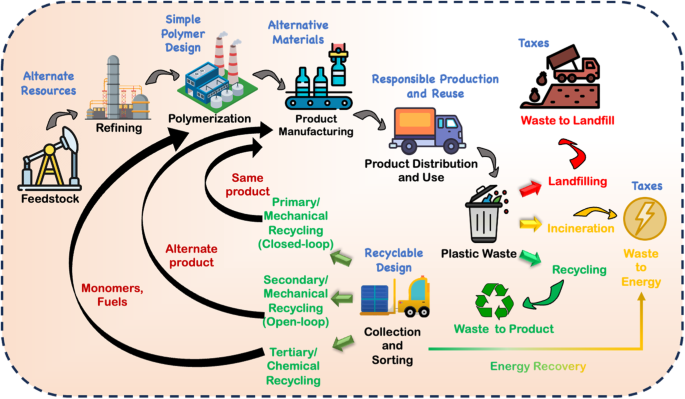
Plastic recycling: A panacea or environmental pollution problem
npj Materials Sustainability volume 2, Article number: 17 (2024 ) Cite this article
Increasing plastic waste is a critical global challenge to ecological and human health requiring focused solutions to reduce omnipresent plastic pollution in the environment. While recycling has been touted as one solution to counter plastic waste and resource utilization, it has been largely ineffective in offsetting the impact of rising global plastic production of more than 400 million metric tonnes annually, due to low global recycling rates of only 9%. Over three decades since implementing plastic resin codes, recycling has favoured thermoplastics, neglecting thermoset plastics. There is a constant need to enhance overall recycling efficiency by exploring advanced methods, as enormous gaps exist in fully unlocking the potential of plastic recycling. We identify critical gaps associated with plastic waste recycling and its potential environmental impacts. We discuss substantial progress in recycling technology, designs-for-recyclability with controlled chemical use, and economic incentives to expand markets for recycled plastics and to curb plastic leakage into the environment. Additionally, we highlight some emerging strategies and legally binding international policy instruments, such as the Global Plastics Treaty that require further development to reduce plastic waste and improve plastic recyclability.
The versatile properties of plastics, in contrast to traditional materials such as paper, glass, and metals, facilitate innumerable applications across various sectors, including automobiles, agriculture, electronics, packaging, and healthcare1,2. For example, the incorporation of plastic in various vehicle components reduces weight and enhances performance in automobile industries. Our growing reliance on the convenience of consumer plastics has resulted in increased global production and consumption leading to unprecedented plastic waste generation and widespread plastic pollution. However, our infatuation with plastics is weakening due to its associated risks to environmental and human health3,4.





/https://public-media.si-cdn.com/filer/2d/f8/2df8565b-846e-47d1-b139-ce52095fb8da/37437678176_efd04bd9e4_o_web.jpg)


















